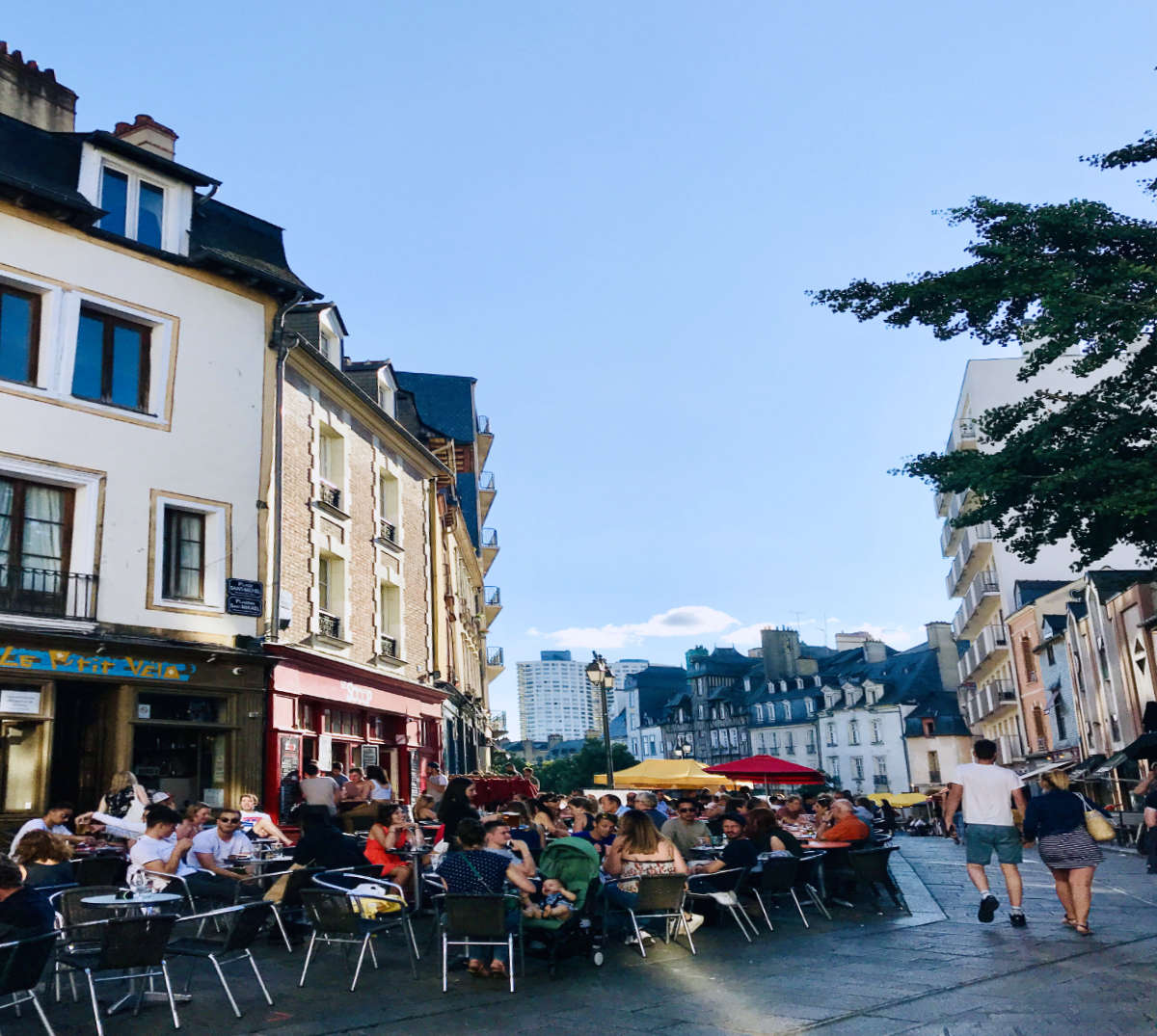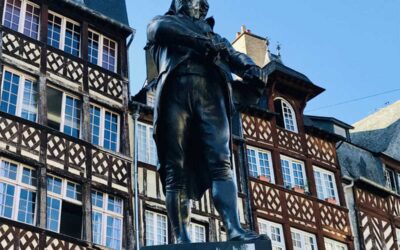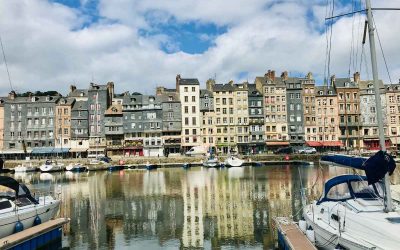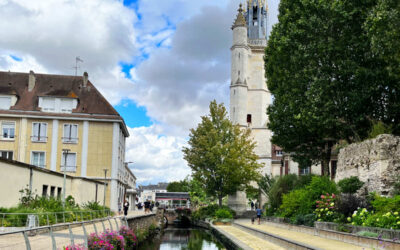Rennes in France is not a city that most foreign tourists visit. It is not on the radar of most visitors, and probably not on any bucket list.
That, however, is a shame because if you are looking for a charming French city, with plenty of history, interesting food, and lovely architecture, Rennes will be right up your alley.
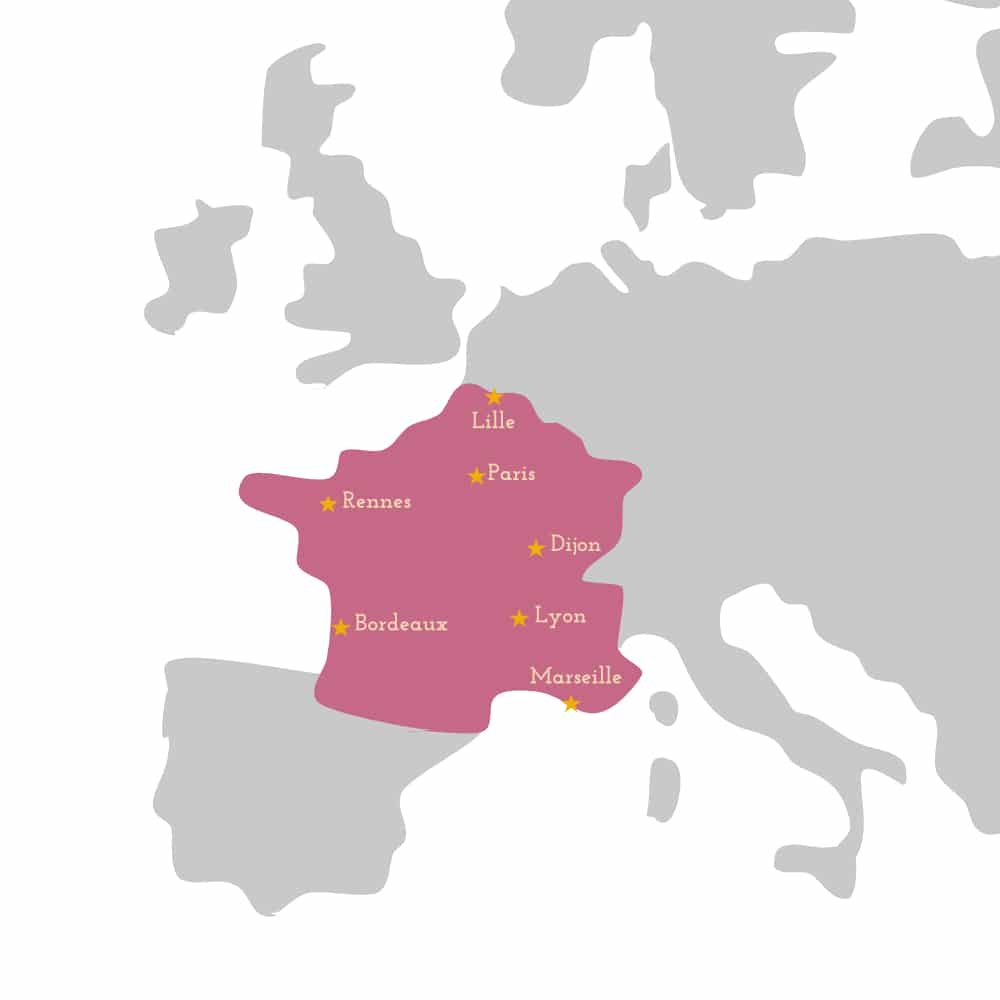
Rennes is located in the region of Brittany. This is called Bretagne in French, and is not to be confused with Grand Bretagne, which is actually French for “Great Britain”.
While visiting Rennes and around Brittany, you will notice that it has its own distinctive flag and language called breton. That is because it used to be an independent duchy with its own unique culture and still holds a fierce determination for independence.
But to French people, Rennes is a hidden gem in France that voted one of the top places to live in France by a national newspaper. So let’s look at the best things to do in Rennes and what you can expect on a trip here. Allons-y!
History
The capital of Bretagne, Rennes’s history predates the Roman empire. It was a small Gallic village, with Celtic origins as early as 2BC. Those Celtic origins continue to be heard in names of places and people in Bretagne.
After the Romans invaded, its location about 55 km (34 miles) away from the English Channel, made it an important strategic base. If you are a fan of the Asterix and Obelix comic books, it is in this era and region where the brave Gaulois are fighting Julius Caesar and the evil Roman Empire.
After the fall of the Roman empire, the Vikings came and went, and the Bretons as they became known, became an independent duchy. Like William the Conqueror who was a one door down in Normandy, the Duchy of Bretagne had mixed relationships (i.e. many wars) with its neighbors in England, Normandy, and the rest of France.
This continued until 1491, when Anne of Bretagne inherited the duchy at the age of 14. She was one of the most eligible brides on the market (i.e. rich) and the King of France Charles VIII (and his army) insisted that she marry him. In order to save the city of Rennes which was under siege, she acquiesced.
And thus the duchy of Brittany became part of France. Today its culture is distinct enough from the rest of France to, every once in a while, raise the head of separatism with its own Federalist movement.
Things to do in Rennes
1. Visit the Parlement de Bretagne
The seat of the Breton Parliament was established in 1485 under the Duchy of Brittany, and continued after Brittany became a part of France. The Kings of France and their descendants reluctantly let Bretagne continue to maintain its own parliament (under the agreement insisted upon Anne).
It was spared in the great fire of 1720 (when almost the entire downtown core of Rennes was destroyed).
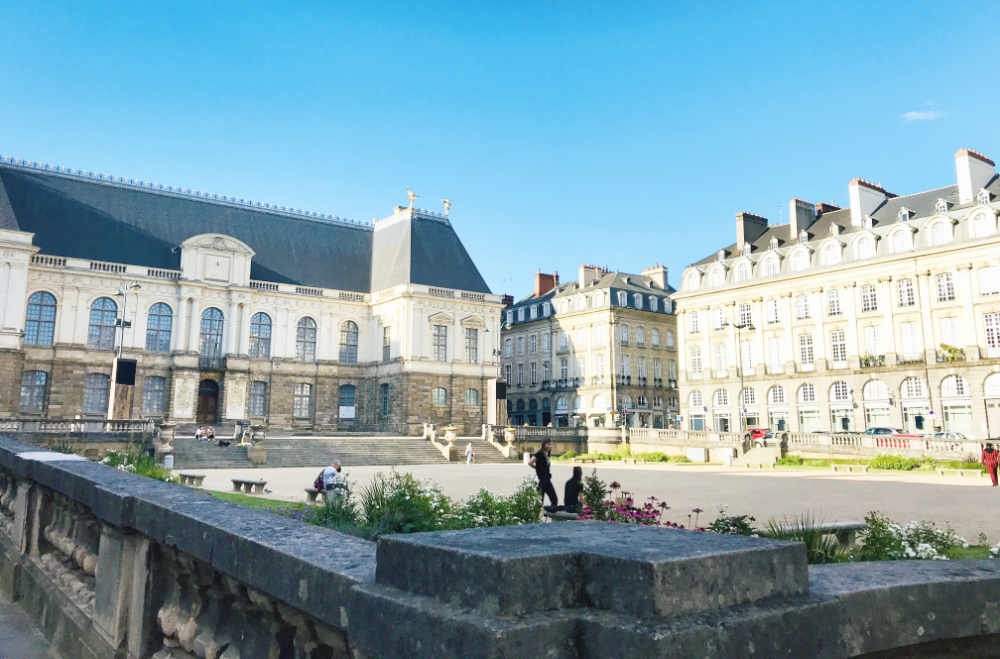
But that all came to an end with the French Revolution and the storming of the Bastille in 1789. The Bretagne Parliament was dissolved by the French National Assembly but famously never ratified by the Parlement itself. The Bretagne Parliament met on the same day to declare the decision “null and void forever”.
The building remained an important reminder of Brittany’s independent roots until a 2nd great fire partly burnt down the building in 1994. You can read more about the history of Brittany here.
The building has been extensively renovated and today houses the Courts of Justice along with several fine examples of 17th-century French pictorial art. Since it is a working government building, visits can only be made with a reservation with the Tourist Office.
Interesting anecdote: In 1899, the scandalous spying trial of Alfred Dreyfus, a Jew, was held in Rennes. It was a case of anti-semitism that shook the conscience of France, and its repercussions are still felt today.
Today the building where the trial was held, is a high school called Lycée Émile Zola after the author of the famous text J’accuse, proclaiming Dreyfus’ innocence. You can read more about French history here.
2. Shop at Le Cour des Lices (and farmers’ market)
The heart of the city, this large square holds many restaurants and bars. But probably one of my favorite things to do in Rennes is to visit one of the biggest producers’ market in France, the Marché des Lices.
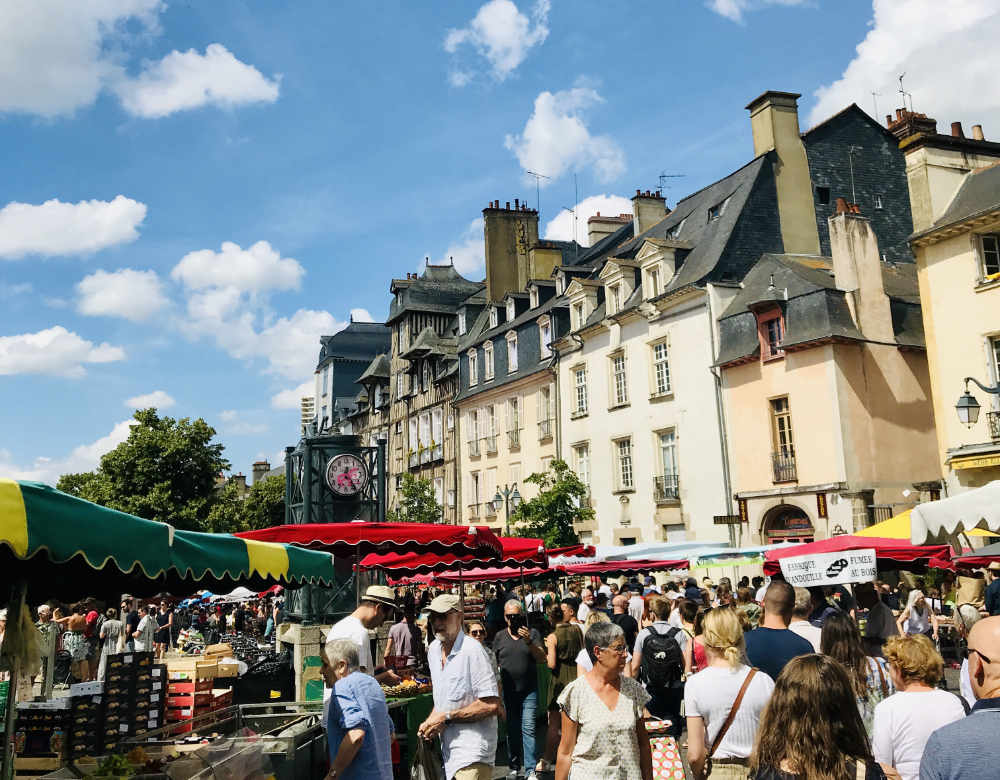
The first market was held here in 1453, and it has been a gathering point ever since. At one point in time, even executions took place here.
The market has expanded several times, with everything from fruits and vegetables, flowers, and more being sold here. There are also large indoor stalls selling meats and poultry and even food trucks selling local Breton specialties.
The market runs every Saturday from 7:30 am to 1:30 pm. It is one of the biggest markets in France, even bigger than the ones in Paris.
3. Go inside Cathedral Saint Pierre
The earliest church on this site was in the 6th century, replaced by a gothic cathedral that has been continually under construction and renovation since the 12th century.
Interestingly, it is here that on December 25, 1483, the future Henry VII of England, then in exile in Brittany, promises to marry Elisabeth of York, daughter of the previous King Edward IV of England. Their actual wedding in 1486 seals the end of the Wars of the Roses and leads to the Tudor dynasty in England.
Like some of the other cathedrals around France, the cathedral was badly damaged during WWII but is now fully rehabilitated. The church is dedicated to Saint Peter and has been a historic monument since 1906.
4. Visit Musée des Beaux-Arts (Fine Arts Museum)
A stunning fine arts museum on Quai Emile Zola that was established in 1794 to hold artwork confiscated from nobles, government buildings, and churches in the area.
It holds many rare works, including drawings by Leonardo da Vinci, Botticelli, Donatello, and Picasso. There are also several archaeological bronzes, ceramics and sculptures from the Egyptian, Etruscan, Greek and Roman eras.
5. Enjoy Parc du Thabor
A beautiful park combining the classical French and English garden styles with a cave, basins, and a rose garden with more than 2,000 varieties of roses.
It used to be the former garden of the monks of Saint-Melaine Benedictine Abbey and was redesigned as a public park in the 19th century.

About 10 hectares in size, there are French-style gardens, a smaller English-style garden, a man-made cave, bandstand, aviary and a small ornamental lake.
If you enjoy nature, you must put this on your bucket list of things to do in the city. It is definitely a beautiful place to spend an hour or two, where the locals love to go.
6. Try some Pommeau de Bretagne AOC
This alcoholic aperitif (17% vol.) is Appellation d’Origine Contrôlée (meaning it is specific to this region), is made from two-thirds unfermented apple juice and one-third cider brandy.
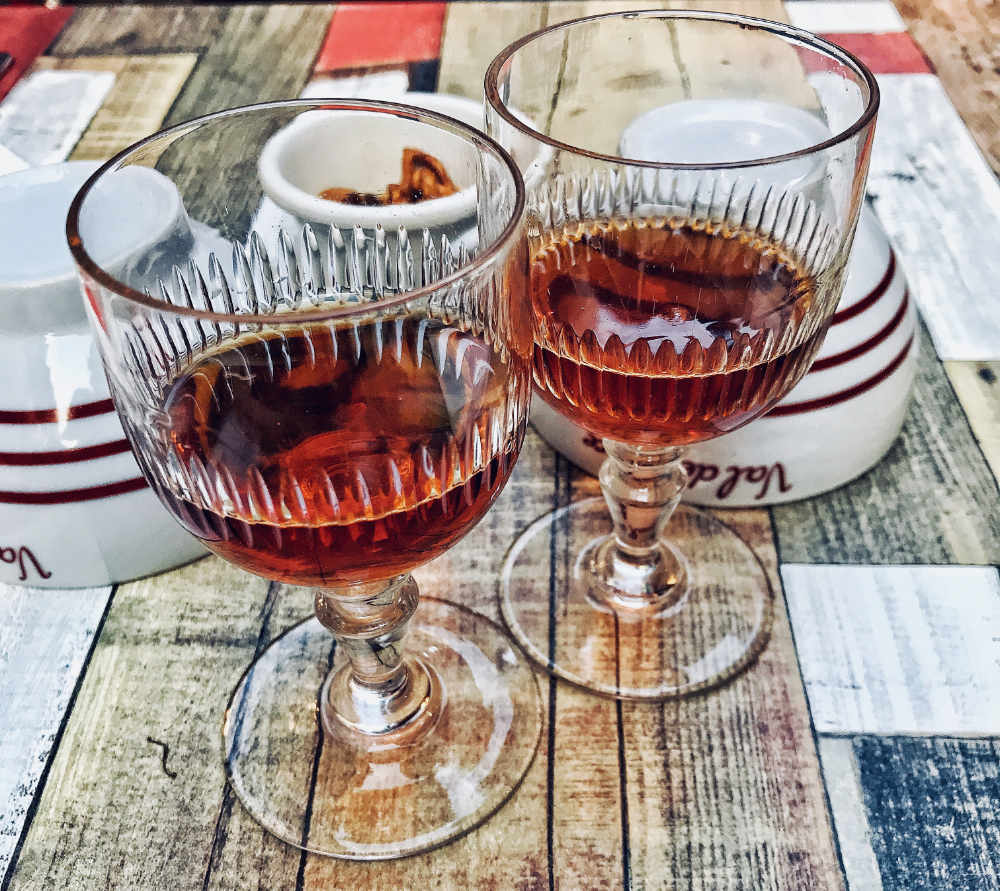
It is aged in oak casks for at least 14 months and is absolutely delicious. You can read more about foods to eat and drink in Brittany here.
7. Have Crêpes and Cider for dinner
You cannot visit this part of Brittany and not indulge in some Breton crêpes and wash it down with a mug of cider. There are two types of crêpes, savory and sweet.
Savory crêpes are filled with toppings similar to a pizza: ham, cheese, spinach, etc. depending on what you prefer. Sweet crêpes are usually topped with a fruit coulis, chocolate, nutella, ice cream, etc. You could also try a crêpe suzette.

There are many small crêperies all over town, but for the best atmosphere, head over to one of the many restaurants in the Cour des Lices or Rue Saint Georges.
How to get to Rennes, France?
From Paris Montparnasse station, it takes about 1.5 hours on the train direct to Rennes. There is also a small international airport, with direct flights from across Europe. Another option is to stay in Caen and take a day trip over to Rennes.
How many days should you stay?
Two nights is likely sufficient, including the night you arrive. If you are planning a weekend trip, make sure you arrive with enough time to explore the Marché des Lices which runs every Saturday morning from 7:30am to 1:30pm.
Where to stay?
There are quite a few hotels around the train station, which are quite central with a good amount of shops and restaurants nearby. That being said, the area is quite modern and doesn’t quite have the old world charm that the area around Marché des Lices does. It is a pleasant 10-minute walk from the train station to the Marché des Lices.
Hotels around the train station:
- €€ – The Originals City, Hôtel Le Sévigné (Inter-Hotel)
- €€€ – Novotel SPA Centre Gare
- €€€€ – BW Premier Collection Le Saint Antoine Hotel et Spa
Hotels around Marché des Lices:
- €€ – Hôtel Lanjuinais
- €€€ – Hotel De Nemours
- €€€€ – Mercure Centre Place Bretagne
- €€€€€ – Balthazar Hotel & Spa – MGallery by Sofitel

☞ READ MORE: The Unvarnished Side of Visiting Mont Saint Michel
In all, Rennes is an excellent destination for a short city break, and close to other tourist stalwarts like Saint-Malo and Mont Saint Michel.
So I hope I’ve inspired you to visit this hidden gem in France. If you do make it out there, comment back and let me know your favorite part of the city. A bientôt!
